May 2010
We make a quick visit to...
LuxGerSwitzerland
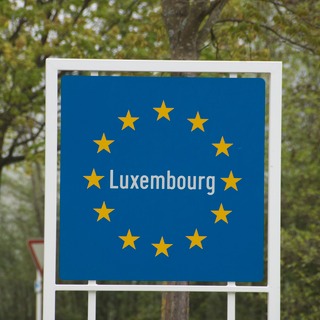
About the first of May, we finally decided we couldn’t hang around Belgium forever, no matter how much we were enjoying ourselves, and popped over the border into Luxembourg. Easy to do, in this modern Europe. Over the course of the next several days we saw a lot of this very small country, liking every minute of it and finding the northern area the most interesting and the least crowded. We immediately noticed that the houses are more colorful than in Belgium, painted stucco over the brick or stone that had prevailed in that country; quite pretty. There were museums and castles, churches and even ruined cathedrals; enough for any Disneyland anywhere in the world. The entire country is like a large park, lovely and green and well clipped. Ultimately, it became just too cute for words and we decided that we had had enough.
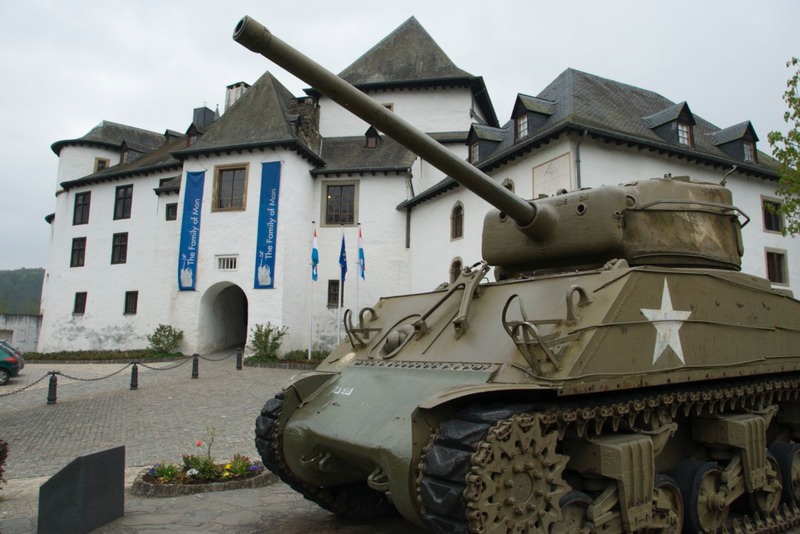
But before we moved on, we had a good time. A real highlight was the Family of Man exhibition in a 12th-century castle in Clervaux. You may remember the photographs, from the book that came out in the 50’s. Edward Steichen was the curator of photography for the Museum of Modern Art in New York, and mounted the exhibition while he was there (the book was a by-product of the exhibit); he arranged for the photographs to be donated to Luxembourg, his home, when he retired. This is a permanent exhibit, and quite incredible. There are hundreds of pictures, from all over the world, all together amounting to an essay on the human condition. One series, about 10 in all, showed children from all these different countries all over the world, all playing ring-around-the-rosy. So different, and yet so much the same.
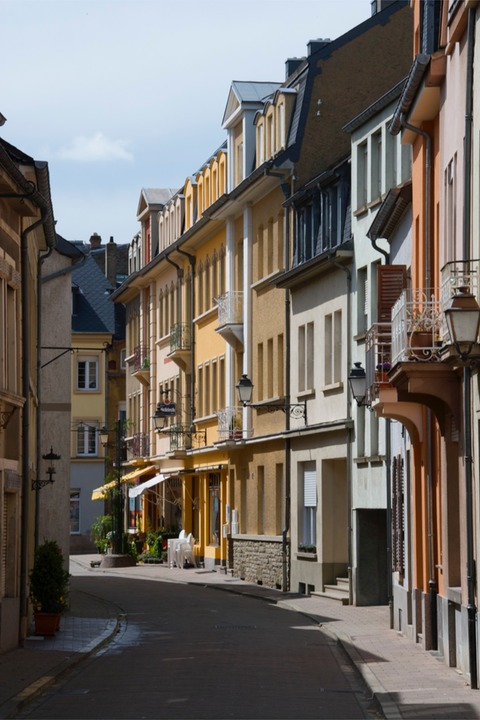
Many of the towns in Luxembourg are lovely resort areas and somewhat cluttered with folks, but we thoroughly enjoyed Diekirch, which played an important part in the Battle of the Bulge during WWII and has a very good military museum, complete with tanks (of course). The super thing here was, again, photographs. The battle in this area was very well documented, and there are zillions of pictures of the scene, along with newsreel footage; very effective. In Diekirch we also had a chance to wander through the ancient Oude Sint Laurentus Kerk, which was built over Roman baths, and while we were there an organist was practicing; it was a real treat. Diekirch also has a small auto museum, which Rick enjoyed. It’s a lovely town, and we liked it a whole bunch.
Luxembourg is a Duchy, and that’s kind of cool. Small, totally under control; it seems they gave up military aspirations early on, and concentrated on infrastructure for the country. Their roads are very good, and particularly motorcycle-friendly, with guard rails on the curvy mountain roads made to keep a sliding biker from going through. It’s spotless, well governed and highly organized. If you are camping, by the way, you must be in a campground or authorized area. Nothing else is tolerated. We had known this before arriving and saw signs to that effect everywhere.
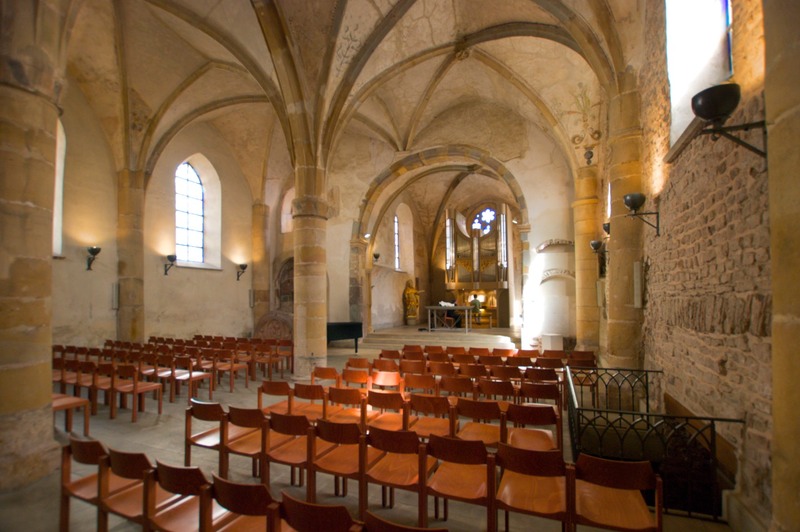
Having seen much of the countryside, we noticed the towns were all starting to look alike and decided to head for Luxembourg City; but upon arrival it seemed too modern, too much like other areas; and we were not enticed just now, despite the charms listed in the guidebook. A reason to return another time. So, we filled our fuel and propane tanks (knowing such things were less expensive here), and headed toward the border.
By now (shocking as it may seem), we had put together a plan (PLAN?) for the next month or so. In about a month (June 10 to be exact) we would be on a ferry from Boulogne, France, to Dover, England. Between now and then, we decided to see a little of eastern France, and then head into Switzerland to see a friend in Luzern, followed by a visit with friends in the Stuttgart area. Afterwards, with whatever time was left, we would head north through France to visit Verdun and the Somme area, and perhaps return to Belgium to check out the area around Ypres (known as Ieper these days); altogether these towns saw much of the worst of the trench fighting in WWI.
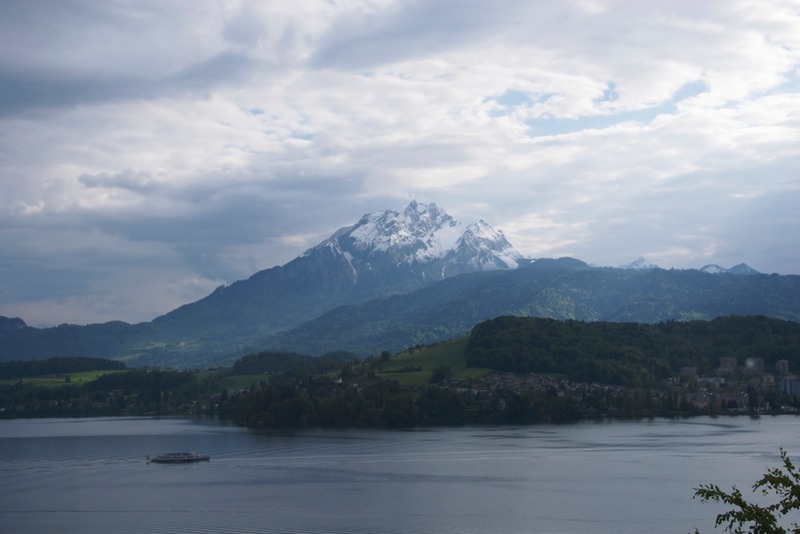
We’ll cover the portions of northeastern France that we visited in our next message; for now we’ll move on to our brief stays in Switzerland and southwestern Germany.
We had thought Switzerland would have a significant border. After all, we were leaving the European Union. But they coulda cared less, no passport stamp, nada, humph. However, for the first time since arriving in Europe we actually did have to stop and talk to someone at a border; and, in this instance, to purchase a road use pass as La Tortuga, svelt as she is, does exceed the 3.5 tonne limit they set for normal cars.
On this trip, we had come to visit with an American friend, Amanda, who has married a charming Swiss fellow and is now living in Luzern, in a pretty house overlooking the lake. We hadn’t seen her in almost a decade, so we had lots to catch up on (to say nothing of doing laundry – but have you ever tried to use a washer with all the instructions in German? -- A real adventure). Amanda has been here for five years and made a wonderful tour guide for us, though we limited ourselves to a couple of walks to downtown Luzern for shopping, coffee and cakes, etc. The weather was mostly rather dreary, but we were very happy to just visit.
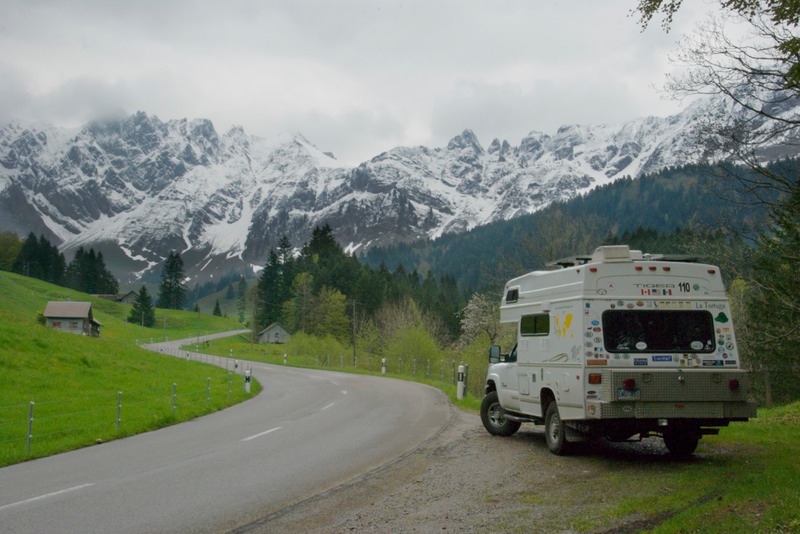
We will definitely come back to Switzerland many times, and will see everything there is to see; for now we were happy with Luzern and its surroundings, followed by a tiny high road over a very high pass (it snowed), and glimpses of some lovely lakes. We do have some first impressions, of course. It’s a stunningly beautiful country, amazingly so. But it’s much more than just a pretty face. We saw very rustic working farms and lots of selective timber being cut (and many lumber yards), as well as lots of horses and sheep and the other usual suspects; oh, and some llamas. We have been told that this is a very expensive country to live in; probably, but our experience was so minimal that we cannot really comment. Fuel was close in cost to what we’d seen in France and Germany, and so was food in the grocery stores. Now coffee and dessert…well, that’s another matter.
Coming down out of the mountains again, we crossed back into southern Germany, and found ourselves in the Black Forest. Too cool. Looks a lot like Switzerland, at least what we could see. It was very rainy and cool, and we started getting a lot of fog. We wanted to take a road up into higher elevations, but decided to stop for the night, hoping for better weather the next day. We got lucky, and it was indeed clearer, so we headed up the Schwarzwaldhochstrasse, a famous road through the heart of the forest. It was a very nice drive on a lovely day, and we enjoyed one delightful town after another.
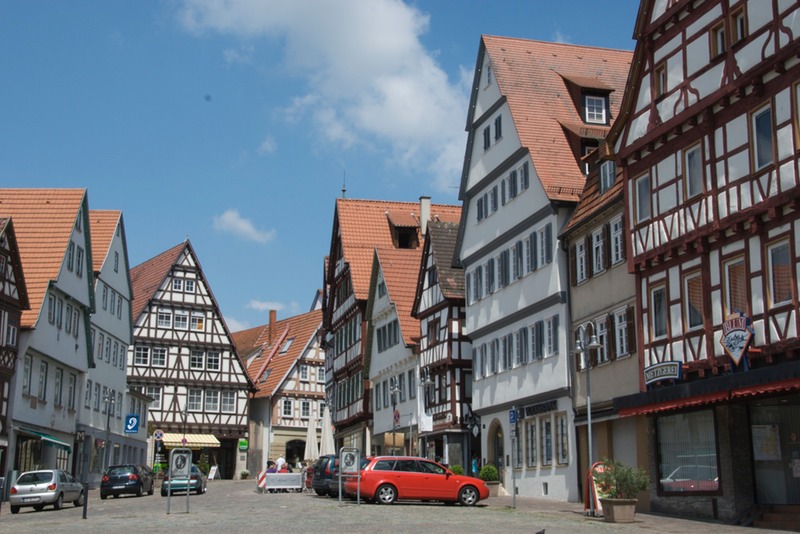
Our ultimate destination was Leonberg, a large town a bit west of Stuttgart, where friends live whom we had met in Panama in 2008 when we all were on our way to South America. We had kept in touch, and had a firm invitation to come and stay when we got to Europe. So firm we had mail sent there, as well as the infamous replacement wheel for the Tiger, and other goodies.
Helge and Brigitte are wonderful hosts, and we had a grand time; we stayed with them for several days. They took us with them to their square dancing class graduation (we watched and cheered them on), and to Kagel (a German version of bowling that is lots more fun – Rick tried it out); totally wore us out. Square dancing is very popular in Germany; it is exactly like in the States, and it took me a moment to figure out what was so odd: the calls were all in English. We had two great evenings with all their friends; they were very friendly, most spoke lots of English, and all were very interested in our adventures. As we said our good-bys we were always wished safe travels and to be sure to come back. We also enjoyed some traditional German food in a great local restaurant complete with two fellows playing the accordion, songs from the crowd and pictures taken by the owner.
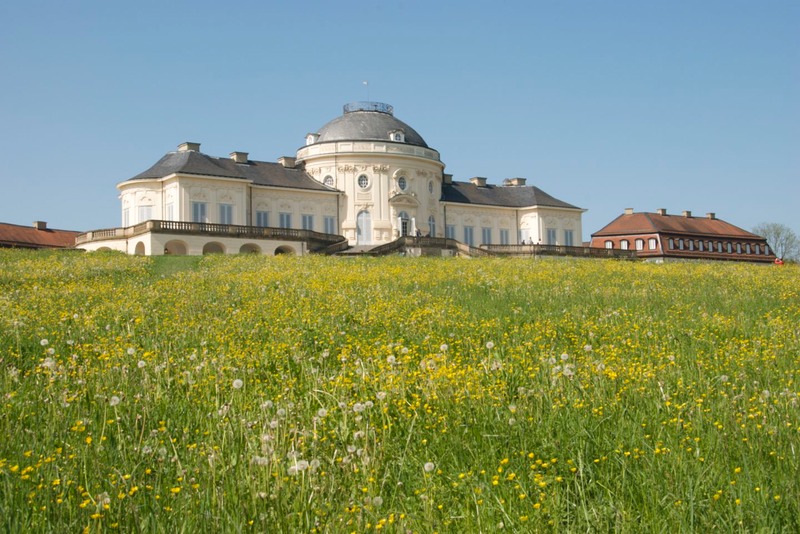
We had a tour of some of the local sights – there are so many in this area it will take us years to see them all. The countryside is lovely and green, with many forested areas. It’s a large wine growing region, with vineyards on all the hillsides. We noticed that solar panels were on many roofs in every town; this had been true in Switzerland as well. There are castles and churches and gardens and charming villages galore; Leonberg itself is quite historic, and goes back to 1248. We poked around Stuttgart and drank lots of beer (the Hefeweissbier is damn fine stuff) and enjoyed several days of warm weather. Not too shabby. To say nothing of the great local Swabian food that Brigitte cooked; and their pretty garden with rhododendrons, iris, and peonies all in bloom. And squirrels and a turtle. Great fun.
Helge helped us deal with some issues, including the customs office that was holding the wheel being shipped to us from Texas. He also knew where to go to get the sticker we needed in order to enter the many German LEZ (low emission zone) areas. The sticker (which is green) only cost €5, and while it is only good in Germany, it has no ending date and confirms for us that our vehicle does indeed meet the Euro IV standard, which is EU wide and is the highest current level. There are many countries in Europe that have these LEZ areas; now we have a little more confidence in our ability to deal with them as needed.
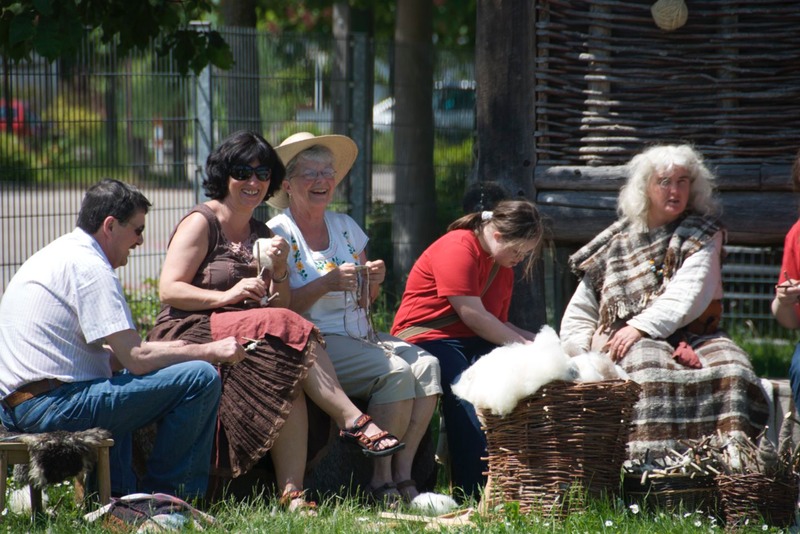
A special highlight was visiting a Celtic Museum in Hochdorf, near Leonberg. The Celts were in the area in the 8th century, and an important person is buried in a mound near Hochdorf. There is a very nice museum, and we had the good fortune to get a private tour given by the curator/archeologist on site; this was because of a connection our friends had. It was fascinating. By the bye, the curator assured us that the only instances she has found where Celt is pronounced Selt rather than Kelt is in reference to sports teams… go figure.
A lesser highlight was spotting Das BonBon Museum, which advertised GummiBearLand as one of its attractions. Try as we might we couldn’t quite make the wheel turn into the parking lot.
Oh, yes… we went to the Mercedes Benz museum in Stuttgart and it was really cool! It’s housed in a modern and very interesting building, has lots of well displayed information, free audio guides in various languages, and the cars… well, the cars are sensational.
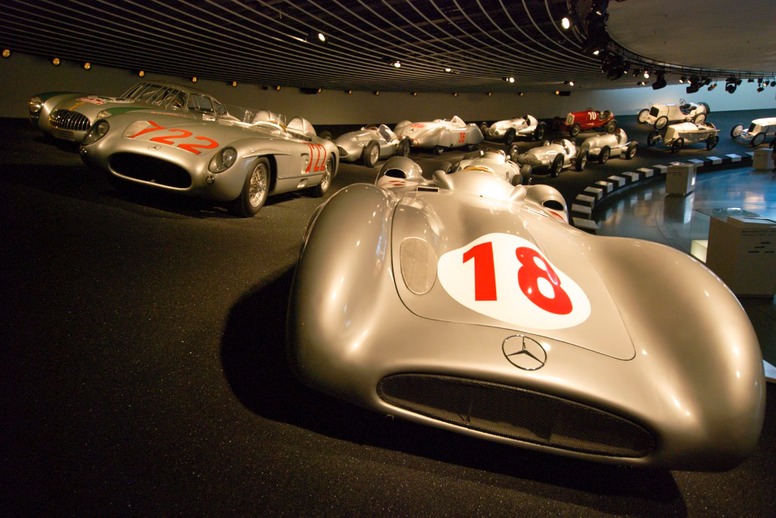
Naturally they do a great job of telling the history of M-B, but the information on how the company fared during both wars and their aftermath was very interesting and the displays include things like trucks and buses along with the more famous car models. For Rick though, the undoubted highlight was the section on the racing cars, and it was terrific. Rick says that as far as he knew he was the only guy in his high school who was interested in European road racing instead of hot rods and drag racing; in this museum he finally got to see cars that he first encountered nearly fifty years ago. The M-B Silver Arrows of the 30s and 50s dominated the racing of their time and are absolute legends now; and there they all were. Kathy and our friends were fainting with hunger by the time they were able to drag Rick away. Go to www.motor-museums.com to see some wonderful photos from our visit to this spectacular shrine of auto racing.
We finally left Leonberg to meet up with some traveling Americans a little further north; they are also in Europe for an indefinite period, and we had fun comparing notes on what has happened so far. With them we spent a day wandering through yet another transportation museum, this one the Auto-Technik Museum in Sinsheim. This location comes complete with a Concorde plane you can poke around in and an example of Russia’s version of the SST as well. This proved to be an amazing collection of stuff filling two exhibit halls; cars, motorcycles, planes, locomotives, military hardware, and mannequins all dolled up in period attire. Very eclectic and very well done, with some really lovely cars. In a way the most intriguing exhibit was a group of Mercedes that had been part of the fleet of armored vehicles used to transport Hitler and his cohorts. Along with the cars, one of which was a 6x6 all-wheel-drive monster, were photo enlargements of Hitler, Goering and others actually riding in or standing by these same cars. Sort of chilling actually, but quite well done. Once again, more pictures can be found at www.motor-museums.com.
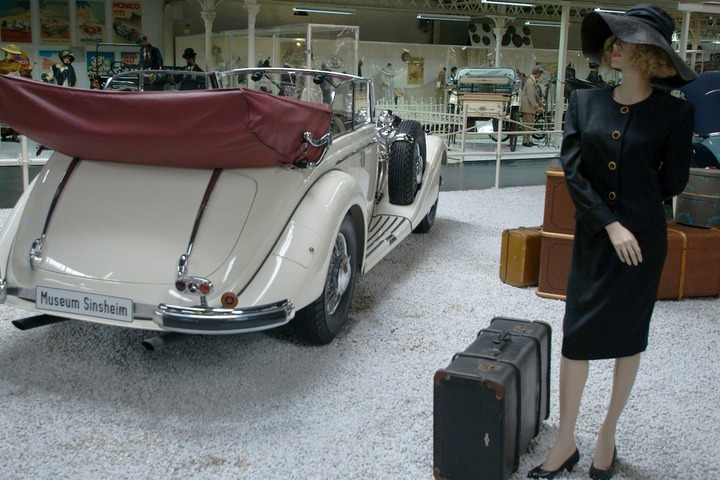
After hugs, we said good-by to our American buddies and started back down through the Black Forest again, heading back towards France. We passed many fields full of strawberries being picked, and bought them right out of the field; it was nice to see the straw packed around the plants, instead of the black plastic used in the U.S. This, of course, is what gave them their name in the first place. We also were starting to see the first cherries; hopefully we’ll get chances to buy some later. We managed to avoid the cuckoo clocks and cute outfits but were amazed one night to hear the unmistakable sound of real, live cuckoo birds. Amazing, they sound just like the clocks.
So, from the land of Cuckoos, Canals, Old Towns, Great Car Museums, and just plain beautiful country, we send...
Happy thoughts and best wishes, Kathy & Rick
Click here to view more pictures from LuxGerSwitzerland.